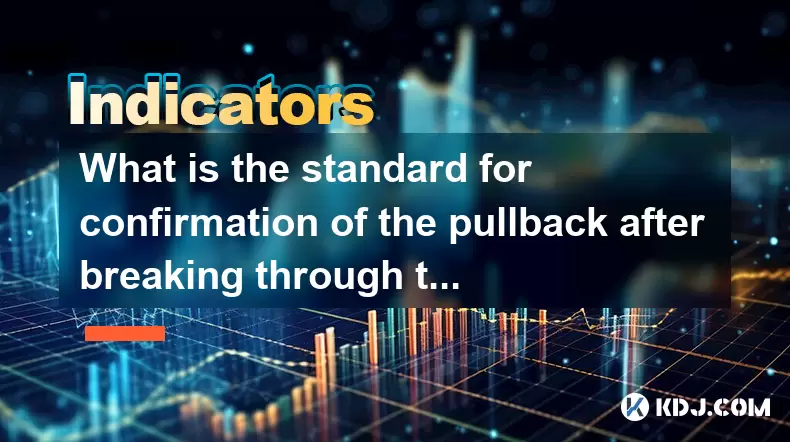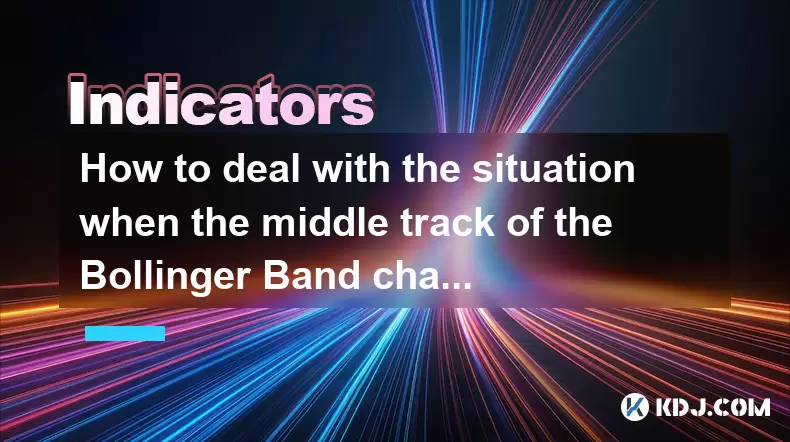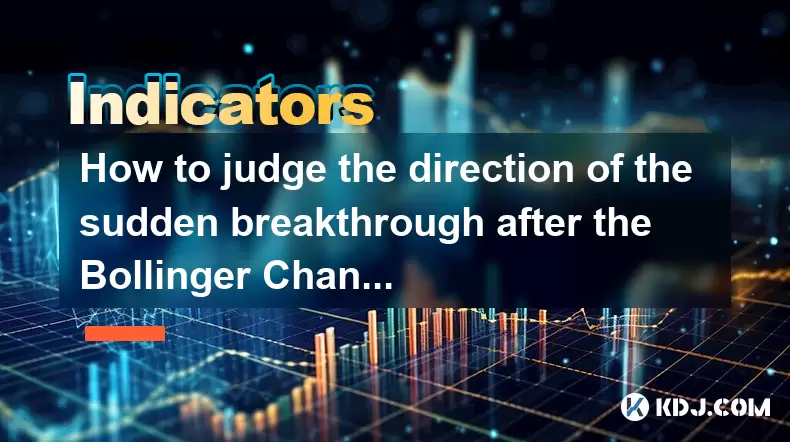-
 Bitcoin
Bitcoin $101,898.5005
-0.75% -
 Ethereum
Ethereum $2,258.1125
-1.07% -
 Tether USDt
Tether USDt $1.0004
0.01% -
 XRP
XRP $2.0178
-2.93% -
 BNB
BNB $624.0243
-1.53% -
 Solana
Solana $134.3298
-0.90% -
 USDC
USDC $0.9999
0.01% -
 TRON
TRON $0.2675
-2.05% -
 Dogecoin
Dogecoin $0.1538
-1.96% -
 Cardano
Cardano $0.5482
-1.11% -
 Hyperliquid
Hyperliquid $35.5636
5.45% -
 Bitcoin Cash
Bitcoin Cash $453.4902
-1.66% -
 Sui
Sui $2.5134
-2.97% -
 UNUS SED LEO
UNUS SED LEO $9.1292
1.77% -
 Chainlink
Chainlink $11.8457
-1.60% -
 Stellar
Stellar $0.2312
-2.73% -
 Avalanche
Avalanche $16.9721
0.29% -
 Toncoin
Toncoin $2.7549
-3.82% -
 Shiba Inu
Shiba Inu $0.0...01081
-1.10% -
 Litecoin
Litecoin $80.8250
-0.71% -
 Hedera
Hedera $0.1374
0.21% -
 Monero
Monero $305.4827
-2.36% -
 Ethena USDe
Ethena USDe $1.0006
0.00% -
 Dai
Dai $1.0000
-0.01% -
 Polkadot
Polkadot $3.2085
-3.12% -
 Bitget Token
Bitget Token $4.0845
-3.13% -
 Uniswap
Uniswap $6.3353
-1.63% -
 Pi
Pi $0.5085
-0.70% -
 Pepe
Pepe $0.0...08913
-3.82% -
 Aave
Aave $232.7090
-0.58%
Is WR effective in option trading? Is WR applicable to cryptocurrencies?
WR can be effective in option trading for identifying reversals and timing entries, but its use in cryptocurrencies requires caution due to high volatility.
May 25, 2025 at 01:00 pm

Is WR effective in option trading? Is WR applicable to cryptocurrencies?
The Williams %R (WR) indicator is a popular technical analysis tool used by traders to identify overbought and oversold conditions in the market. In this article, we will explore the effectiveness of WR in option trading and its applicability to cryptocurrencies.
Understanding the Williams %R Indicator
The Williams %R indicator, developed by Larry Williams, is a momentum indicator that measures the level of the close relative to the high-low range over a given period, typically 14 days. The formula for calculating WR is as follows:
[ \text{WR} = \frac{\text{Highest High} - \text{Close}}{\text{Highest High} - \text{Lowest Low}} \times -100 ]
The resulting value ranges from 0 to -100. A reading above -20 indicates an overbought condition, while a reading below -80 suggests an oversold condition. Traders use these levels to anticipate potential reversals in the market.
WR in Option Trading
In option trading, the effectiveness of WR depends on the trader's strategy and market conditions. Options traders often use WR to identify potential entry and exit points for their trades. Here are some ways WR can be used in option trading:
Identifying Reversals: When WR moves from an overbought condition (above -20) to an oversold condition (below -80), it may signal a potential reversal. Options traders can use this information to buy put options when the market is overbought or call options when the market is oversold.
Timing Entries and Exits: WR can help traders time their entries and exits more effectively. For example, a trader might wait for WR to move back into the neutral zone (between -20 and -80) before entering a trade, reducing the risk of entering at an extreme point.
Confirming Trends: WR can also be used to confirm trends. If the market is in an uptrend and WR consistently stays above -80, it suggests that the uptrend is strong. Conversely, if WR consistently stays below -20 during a downtrend, it indicates a strong bearish trend.
Applying WR to Cryptocurrencies
The applicability of WR to cryptocurrencies is a topic of interest for many traders in the crypto market. Cryptocurrencies are known for their high volatility, which can make technical indicators like WR more challenging to use. However, with the right approach, WR can be a valuable tool for crypto traders.
Volatility and WR: The high volatility of cryptocurrencies can lead to frequent overbought and oversold signals from WR. Traders need to be cautious and use additional confirmation tools to avoid false signals.
Time Frame Considerations: The choice of time frame is crucial when applying WR to cryptocurrencies. Shorter time frames (e.g., 1-hour or 4-hour charts) may provide more signals, but they can also be more prone to false positives. Longer time frames (e.g., daily or weekly charts) may offer more reliable signals but fewer trading opportunities.
Combining with Other Indicators: To enhance the effectiveness of WR in the crypto market, traders often combine it with other technical indicators such as the Relative Strength Index (RSI), Moving Averages, or the Moving Average Convergence Divergence (MACD). This multi-indicator approach can help filter out false signals and improve trading decisions.
Practical Example of Using WR in Option Trading
To illustrate how WR can be used in option trading, let's walk through a hypothetical example:
Step 1: Open your trading platform and select the asset you want to trade options on. For this example, let's use the S&P 500 index.
Step 2: Add the Williams %R indicator to your chart. Set the period to 14 days, which is the standard setting.
Step 3: Monitor the WR readings. If WR moves above -20, the market is considered overbought. If it moves below -80, the market is considered oversold.
Step 4: Look for a potential reversal signal. For instance, if WR moves from above -20 to below -80, it may indicate that the market is about to reverse from an overbought condition.
Step 5: If you anticipate a reversal, consider buying put options if the market is overbought or call options if the market is oversold.
Step 6: Set your entry and exit points. You might enter the trade when WR moves back into the neutral zone (between -20 and -80) to reduce the risk of entering at an extreme point.
Step 7: Monitor the trade and adjust your strategy as needed. If WR confirms the trend, you may hold the trade longer. If WR signals a potential reversal, consider exiting the trade to lock in profits or minimize losses.
Practical Example of Using WR in Cryptocurrency Trading
Now, let's look at how WR can be applied to cryptocurrency trading:
Step 1: Choose a cryptocurrency to trade. For this example, let's use Bitcoin (BTC).
Step 2: Open your crypto trading platform and add the Williams %R indicator to your Bitcoin chart. Set the period to 14 days.
Step 3: Observe the WR readings. If WR moves above -20, Bitcoin is considered overbought. If it moves below -80, Bitcoin is considered oversold.
Step 4: Look for potential reversal signals. If WR moves from above -20 to below -80, it may indicate that Bitcoin is about to reverse from an overbought condition.
Step 5: If you anticipate a reversal, consider selling Bitcoin if it's overbought or buying Bitcoin if it's oversold.
Step 6: Set your entry and exit points. You might enter the trade when WR moves back into the neutral zone to reduce the risk of entering at an extreme point.
Step 7: Monitor the trade and adjust your strategy as needed. If WR confirms the trend, you may hold the trade longer. If WR signals a potential reversal, consider exiting the trade to lock in profits or minimize losses.
Step 8: To enhance your strategy, consider combining WR with other indicators like RSI or Moving Averages to filter out false signals and improve your trading decisions.
Challenges and Considerations
While WR can be a useful tool in both option trading and cryptocurrency trading, there are several challenges and considerations that traders should be aware of:
False Signals: Both option and crypto markets can be prone to false signals, especially in highly volatile conditions. Traders should use additional confirmation tools to validate WR signals.
Market Conditions: The effectiveness of WR can vary depending on market conditions. In trending markets, WR may provide more reliable signals, while in ranging markets, it may generate more false positives.
Time Frame: The choice of time frame can significantly impact the signals generated by WR. Traders need to experiment with different time frames to find what works best for their trading style and the specific market they are trading.
Risk Management: As with any trading strategy, proper risk management is essential when using WR. Traders should set stop-loss orders and position sizes to manage their risk effectively.
Frequently Asked Questions
Q1: Can WR be used for short-term trading in cryptocurrencies?
Yes, WR can be used for short-term trading in cryptocurrencies. However, traders should be cautious due to the high volatility of crypto markets. Shorter time frames may provide more signals, but they can also be more prone to false positives. Combining WR with other indicators can help filter out false signals and improve short-term trading decisions.
Q2: How does WR compare to other momentum indicators like RSI in option trading?
WR and RSI are both momentum indicators used to identify overbought and oversold conditions. The main difference is that WR measures the close relative to the high-low range, while RSI measures the speed and change of price movements. In option trading, WR may provide more sensitive signals due to its focus on the high-low range, while RSI might offer more stable signals over time. Traders often use both indicators together to get a more comprehensive view of market conditions.
Q3: Is WR more effective in certain types of options (e.g., calls vs. puts)?
WR's effectiveness does not inherently depend on the type of option (calls vs. puts). Instead, it depends on the trader's ability to interpret WR signals and the overall market conditions. WR can be used to identify potential reversals in both call and put options trading. The key is to use WR as part of a broader trading strategy that includes other technical and fundamental analysis tools.
Q4: Can WR be used to predict long-term trends in cryptocurrencies?
While WR can provide insights into short-term market conditions, it is not typically used to predict long-term trends in cryptocurrencies. Long-term trends are influenced by a wide range of factors, including macroeconomic conditions, regulatory changes, and technological developments. For long-term trend analysis, traders often rely on a combination of technical indicators, fundamental analysis, and broader market sentiment.
Disclaimer:info@kdj.com
The information provided is not trading advice. kdj.com does not assume any responsibility for any investments made based on the information provided in this article. Cryptocurrencies are highly volatile and it is highly recommended that you invest with caution after thorough research!
If you believe that the content used on this website infringes your copyright, please contact us immediately (info@kdj.com) and we will delete it promptly.
- Cryptocurrencies, Coingecko, and Trending Tokens: What's Hot Now?
- 2025-06-23 23:05:12
- FUNToken: Decoding Past Trends and Getting Started in the Gaming Crypto Sphere
- 2025-06-23 22:25:12
- BTC Price Analysis: Navigating Volatility and the Quest for a New ATH
- 2025-06-23 22:25:12
- Genesis, Bitcoin Mining, and Air-Cooled Miners: A New Era?
- 2025-06-23 22:45:12
- Coinbase's Growth and Resilience: Navigating the Crypto Landscape
- 2025-06-23 22:45:12
- Bitcoin Options Market: Bullish Bets Amidst Geopolitical Jitters
- 2025-06-23 22:51:52
Related knowledge

Is it contradictory that the moving average system is arranged in a bullish pattern but the DMI shows a decline in trend strength?
Jun 23,2025 at 11:43pm
Understanding the Moving Average and DMI RelationshipIn cryptocurrency trading, technical analysis plays a crucial role in identifying potential trends and making informed decisions. Two of the most commonly used indicators are the Moving Average (MA) and the Directional Movement Index (DMI). While both tools aim to provide insight into market direction...

What is the significance of the gap formed by the gap opening not being filled within five days?
Jun 23,2025 at 09:42pm
Understanding Gaps in Cryptocurrency TradingIn the world of cryptocurrency trading, a gap refers to a situation where the price of an asset jumps from one level to another without any trading activity occurring between those two levels. This often happens over weekends or holidays when the market is closed, and significant news or events occur that impa...

What is the standard for confirmation of the pullback after breaking through the neckline with large volume?
Jun 23,2025 at 11:28pm
Understanding the Neckline in Technical AnalysisIn technical analysis, the neckline is a critical support or resistance level that appears in chart patterns such as head and shoulders, double tops, and double bottoms. It typically connects two or more lows (in the case of a head and shoulders top) or highs (in the case of a head and shoulders bottom). W...

How to deal with the situation when the middle track of the Bollinger Band changes from support to resistance?
Jun 23,2025 at 11:22pm
Understanding the Bollinger Band Middle TrackThe Bollinger Band is a widely used technical indicator in cryptocurrency trading. It consists of three lines: the upper band, the lower band, and the middle track, which is typically a 20-period simple moving average (SMA). Traders often rely on the middle track as a dynamic support or resistance level. Howe...

Does the second golden cross of MACD above the zero axis represent the continuation of strength?
Jun 23,2025 at 08:21pm
Understanding the MACD IndicatorThe Moving Average Convergence Divergence (MACD) is a widely used technical analysis tool in cryptocurrency trading. It consists of three main components: the MACD line, the signal line, and the histogram. The MACD line is calculated by subtracting the 26-period Exponential Moving Average (EMA) from the 12-period EMA. The...

How to judge the direction of the sudden breakthrough after the Bollinger Channel narrows to the extreme?
Jun 23,2025 at 11:00pm
Understanding the Bollinger Channel and Its Narrowing PatternThe Bollinger Channel is a widely used technical indicator in cryptocurrency trading, consisting of three bands: the middle band (a simple moving average), and two outer bands that represent standard deviations from the middle line. When the price consolidates for an extended period, the chann...

Is it contradictory that the moving average system is arranged in a bullish pattern but the DMI shows a decline in trend strength?
Jun 23,2025 at 11:43pm
Understanding the Moving Average and DMI RelationshipIn cryptocurrency trading, technical analysis plays a crucial role in identifying potential trends and making informed decisions. Two of the most commonly used indicators are the Moving Average (MA) and the Directional Movement Index (DMI). While both tools aim to provide insight into market direction...

What is the significance of the gap formed by the gap opening not being filled within five days?
Jun 23,2025 at 09:42pm
Understanding Gaps in Cryptocurrency TradingIn the world of cryptocurrency trading, a gap refers to a situation where the price of an asset jumps from one level to another without any trading activity occurring between those two levels. This often happens over weekends or holidays when the market is closed, and significant news or events occur that impa...

What is the standard for confirmation of the pullback after breaking through the neckline with large volume?
Jun 23,2025 at 11:28pm
Understanding the Neckline in Technical AnalysisIn technical analysis, the neckline is a critical support or resistance level that appears in chart patterns such as head and shoulders, double tops, and double bottoms. It typically connects two or more lows (in the case of a head and shoulders top) or highs (in the case of a head and shoulders bottom). W...

How to deal with the situation when the middle track of the Bollinger Band changes from support to resistance?
Jun 23,2025 at 11:22pm
Understanding the Bollinger Band Middle TrackThe Bollinger Band is a widely used technical indicator in cryptocurrency trading. It consists of three lines: the upper band, the lower band, and the middle track, which is typically a 20-period simple moving average (SMA). Traders often rely on the middle track as a dynamic support or resistance level. Howe...

Does the second golden cross of MACD above the zero axis represent the continuation of strength?
Jun 23,2025 at 08:21pm
Understanding the MACD IndicatorThe Moving Average Convergence Divergence (MACD) is a widely used technical analysis tool in cryptocurrency trading. It consists of three main components: the MACD line, the signal line, and the histogram. The MACD line is calculated by subtracting the 26-period Exponential Moving Average (EMA) from the 12-period EMA. The...

How to judge the direction of the sudden breakthrough after the Bollinger Channel narrows to the extreme?
Jun 23,2025 at 11:00pm
Understanding the Bollinger Channel and Its Narrowing PatternThe Bollinger Channel is a widely used technical indicator in cryptocurrency trading, consisting of three bands: the middle band (a simple moving average), and two outer bands that represent standard deviations from the middle line. When the price consolidates for an extended period, the chann...
See all articles
























































































